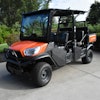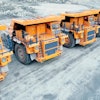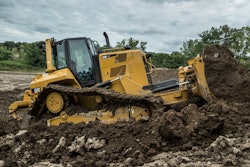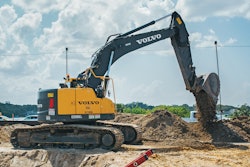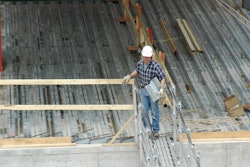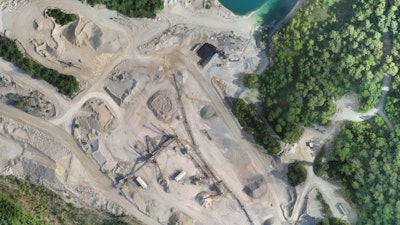
Mulzer Crushed Stone was way ahead of the technological curve seven years ago when Steve McManaway, engineering assistant, had a sit-down with top management and explained how a new technology could play a game-changing role, not only in construction, but in Mulzer’s core business: mining, quarries and marine.
The technology McManaway introduced was the unmanned aircraft system (UAS), otherwise referred to as a drone.
McManaway convinced company owners that the high price of admission to the UAS game was well worth paying because of a basic business truism: Time is money.
After being given the approval from management to move forward into the new world of UAS, McManaway began even more intense research. Preparation would be key and very important if this new aspect and manner of information collection would be successful for the company. Although the application of this technology was new to many areas in which the company proposed to use it, the company and McManaway felt prepared to confront the challenges they knew would come.
Small UAS with the superior technology called for in the company’s plans could require an initial investment of $100,000 or more for a single unit. Research again allowed McManaway to succeed in the new venture. Specific equipment and software more refined to the needs of Mulzer’s operations came with a reduced initial investment of $60,000 to $70,000 for each.
Overcoming initial challenges
McManaway then ran into several hidden surprises. First, no company in the United States would sell a small UAS to Mulzer due to FAA regulations at the time (early 2000s). It could purchase the product in Mexico or Canada, but no product guarantees and no service were offered.
The second surprise came when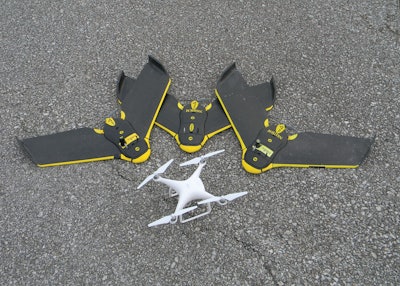 There are two basic types of unmanned aircraft systems (UAS), fixed-wing style and multi-rotary (quadcopter pictured), according to Steve McManaway of Mulzer Crushed Stone.Mulzer Crushed Stone
There are two basic types of unmanned aircraft systems (UAS), fixed-wing style and multi-rotary (quadcopter pictured), according to Steve McManaway of Mulzer Crushed Stone.Mulzer Crushed Stone
McManaway placed his order for the initial UAS at a cost of $60,000 with a supplier in St. Louis. Today, that UAS costs about $30,000, and he expects the cost of this technology to become more competitive as more suppliers enter the market.
McManaway describes his first day with the new device, “After launch, it lifted into the air, circled around its home point we had set, and performed as it was supposed to. Following the checklist we were following for the flight, I hit the manual control button to free-fly the UAS, and it made an immediate nosedive and flew full speed to the ground.”
He made the dreaded, dollar-drenched phone call to his boss.
“How did it go?” he asked.
“I crashed the drone.”
“What?”
“I crashed it.” After the proverbial pregnant pause, he asked, “Can I buy another one?”
To this day, McManaway keeps the broken parts of that maiden flight in a box, “just as a reminder.” Mulzer’s fleet now includes four UAS: three fixed-wing and one quadcopter (defined as having four rotors).
How they use drone technology
As his faith in the technology gradually grew stronger, UAS lived up to everything Mulzer expected. Today the company uses them as the primary means of data collection for material inventory, survey work, permit documentation, and planning for future expansion projects.
“The only thing this technology cannot do is what you can’t image,” he says.
UAS basically come in two types, he says, multi-rotary style (such as the quadcopter) and fixed-wing style. The quadcopter can be launched from a handheld position or directly off the ground. The fixed-wing launches by tossing it into the wind or from a launching platform. Landing of the UAS can differ between using the hand-catch technique or allowing them to self-land.
The quadcopter style is 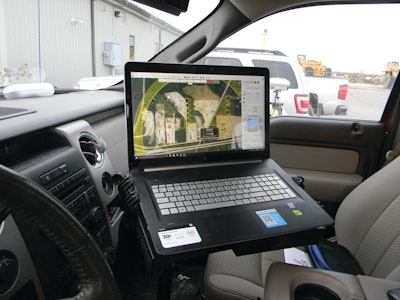 Data collected from UAS can be completed much faster than traditional field surveys.Mulzer Crushed Stone
Data collected from UAS can be completed much faster than traditional field surveys.Mulzer Crushed Stone
Each type has its pros and cons, McManaway says. You need to take into account the ability and limitations of the equipment in each situation.
One example where the fixed-wing UAS would be advantageous is in a topographic survey of a 140-acre tract. This could take a survey team approximately four to five days to complete. The UAS, with an experienced operator, can do this same acreage in approximately 1.5 hours and provide greater detail. But McManaway is quick to point out this technology is not replacing today’s surveyors. “They work together, hand-in hand,” he says.
The quadcopter-style UAS is ideal for surveying of company property and facilities located in an urban area, while always staying within tight boundary constraints.
Both types can provide the same accuracy and information with the proper configuration for the specific equipment and application. These tools allow for rapid collection of raw data, McManaway says. But the fleet professional is always needed to analyze and manage that data.
The use of UAS is an emerging field. One of the new advancements becoming available to the small UAS is Lidar, which enables greater ground mapping and detection than convention photogrammetry.
McManaway says the use of UAS is changing rapidly and becoming more common in all avenues of industry.
“I recently talked with several fleet managers. One has been using UAS technology as long as Mulzer, seven years; another for five years; and a newcomer to UAS starting within the past three months. I’m excited about the possibilities of this technology in the future, and look forward to the company participating,” McManaway says.


